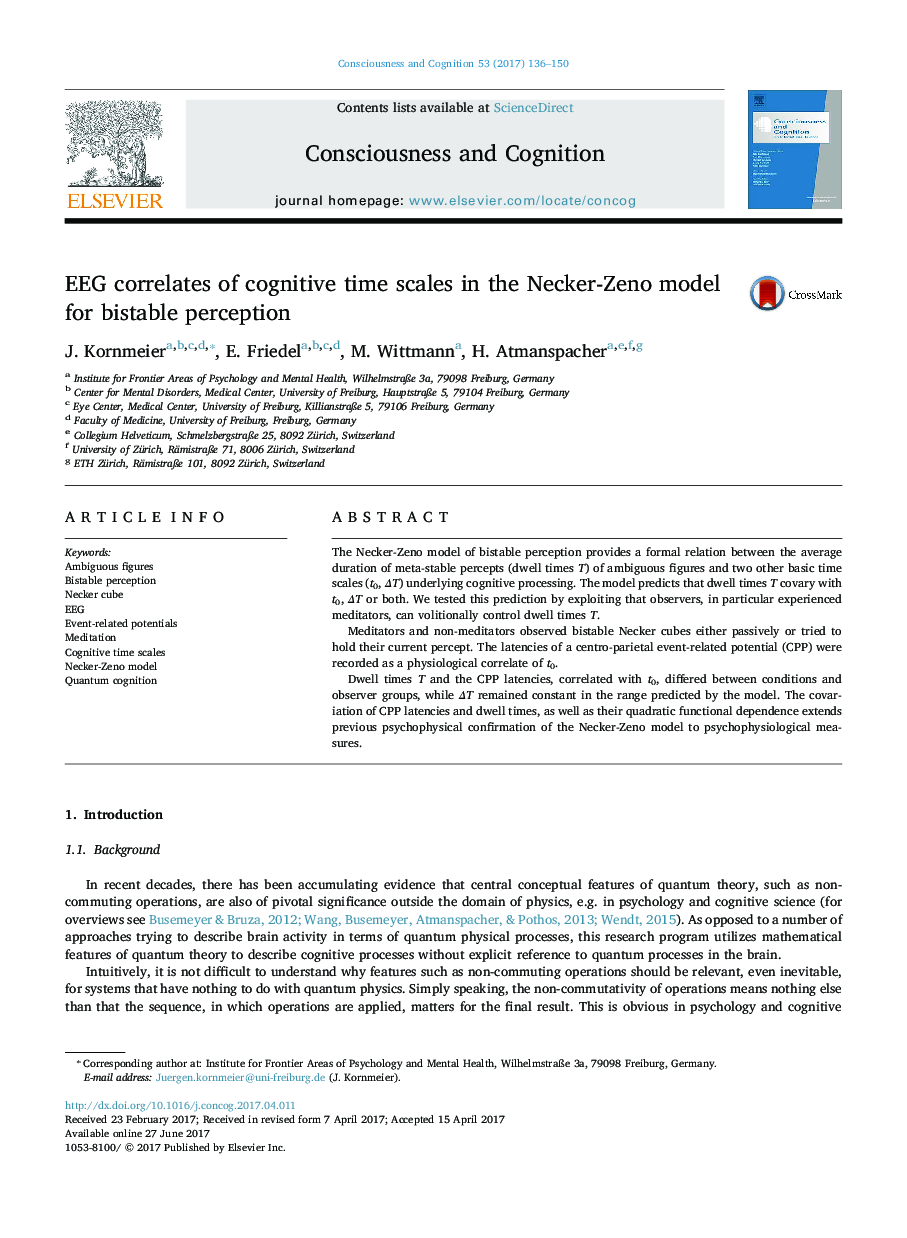| Article ID | Journal | Published Year | Pages | File Type |
|---|---|---|---|---|
| 5041788 | Consciousness and Cognition | 2017 | 15 Pages |
â¢Perceptual reversals of the bistable Necker cube can be volitionally modified.â¢Necker-Zeno model treats bistable perception by non-commutative processes.â¢The model predicts a formal relation of reversal time to other cognitive time scales.â¢This study tests the model by the effect of volitionally modified reversal times.â¢Previous psychophysical evidence for the model is extended to EEG.
The Necker-Zeno model of bistable perception provides a formal relation between the average duration of meta-stable percepts (dwell times T) of ambiguous figures and two other basic time scales (t0, ÎT) underlying cognitive processing. The model predicts that dwell times T covary with t0, ÎT or both. We tested this prediction by exploiting that observers, in particular experienced meditators, can volitionally control dwell times T.Meditators and non-meditators observed bistable Necker cubes either passively or tried to hold their current percept. The latencies of a centro-parietal event-related potential (CPP) were recorded as a physiological correlate of t0.Dwell times T and the CPP latencies, correlated with t0, differed between conditions and observer groups, while ÎT remained constant in the range predicted by the model. The covariation of CPP latencies and dwell times, as well as their quadratic functional dependence extends previous psychophysical confirmation of the Necker-Zeno model to psychophysiological measures.
Graphical abstractDownload high-res image (140KB)Download full-size image
